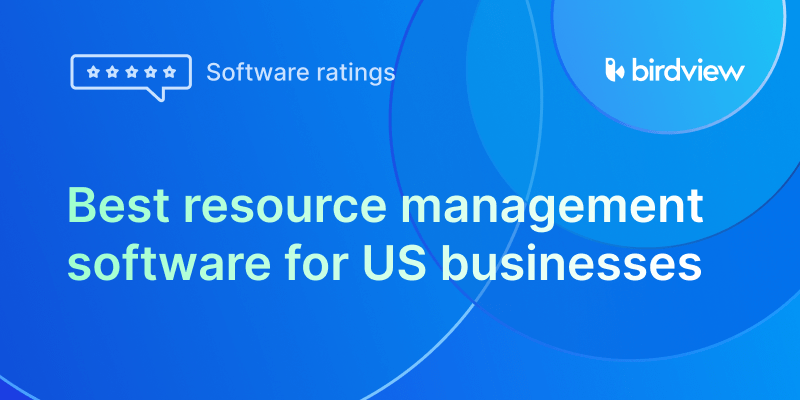People are starting to call remote and hybrid work arrangements the “now normal.” As the world starts moving past the brutal effects of COVID-19 and subsequent lockdowns, many companies are starting to consider retaining some sense of virtual work arrangements for their staff.
If there‘s one good that has come out of the pandemic, it‘s the realization that technology now enables companies to operate with more flexible work arrangements. However, that doesn‘t mean remote work arrangements with some or even most of your staff won‘t automatically result in more results and success. There must be proper systems in place to support these setups. One such system and process that companies must prepare for remote employees is an effective workflow management system.
Why Use a Workflow Management System?
A workflow management system is simply a digital methodology of arranging work deliverables that allows collaboration and progress even when not all team members are physically present in one place. Think of it as project management on steroids. Project management is one vital aspect of workflow management, but it‘s more than that. It‘s managing projects and day-to-day operations in one integrated system for better output delivery.
Companies with a clear project management structure in place have 38% more successful projects than those that did not. So as companies start adopting remote team management tools and creating people and technology processes that support virtual work setups, it‘s crucial that everything is set up right before the now normal commences within an organization.

Steps to Creating and Implementing an Effective Workflow Project Management System
Let us line up the necessary steps to properly build and implement an effective workflow management system for remote employees and the organization as a whole.
Land on One Tool You Can Use for the Long Haul
One of the first crucial steps to workflow management systems is selecting and setting up project management tools for remote teams. When deciding on digital project management tools, it‘s crucial that people in charge of creating and deploying these systems decide on tools that they can use for the long haul. Shifting from one tool to another to manage tasks, schedules, meetings, deliverables, and budgets tend to become time-consuming and inefficient, especially among larger organizations.
Try test-running any tools with smaller sample groups like a team or department before deciding to roll out as a whole to the entire company. Another thing to consider is the budget. Some of the best workflow management systems will cost a company, but every dollar will be worth it if implemented well.
Get Complete Buy-in From Everyone
After selecting remote workforce management software, the next step will be to roll it out for company use. When deciding to adopt certain task and workflow management tools, managers need to make sure that there is complete buy-in from everyone and that all team members use these tools. Anyone who is out of the loop in terms of systems and tools might become a kink in the company‘s armor.
Take time to train and onboard all staff into the new system. Provide live and on-demand materials that people can review so that they understand the system better. Get supervisors to check with their teams that the system rollout is going smoothly.
Connect Internal and External Management Workflows
Workflow management tools won‘t only affect internal operations. It will highly affect external ones too. A workflow management system will overlap with front-facing company operations such as client relationship management, customer service, and sales.
Ensure that all bases are covered and that any tools used for frontline interactions with potential leads and clients integrate seamlessly with a workflow management tool. Many project management tools can integrate with CRM, customer support, and sales tools or even have their own version as well. If so, consider adopting the new system‘s version to avoid having to manage so many subscriptions and software.
Document All Processes
Organizations like to skip process documentation because it‘s tedious and seemingly not a good use of time in the beginning. But as time will go by, these documentations will serve as a roadmap for more efficient workflows. Have a written operations manual for employees to refer back to when running operations. It‘s best that the guide be uploaded on cloud-based storage so that remote staff can access it no matter where they are.
Add Task Management Processes in Place
One of the pinnacles of workflow management is efficient task management. These systems will help ensure that the needle keeps moving internally and that any campaigns, projects, events, or programs will move smoothly and launch with little hiccups.
When prioritizing projects, separate recurring tasks from ad hoc ones. Doing so will provide more clarity to staff in terms of what projects will become a recurring part of their workweek and what might be a temporary assignment that will end when the project is completed. Task tracking tools to manage remote employees often have a few basic functions.
- A task tracking system that lines up project deliverables and deadlines
- Progress tracking to help managers know where the team is at in terms of completing certain aspects of a project
- A personnel tagging capability to determine who must do what
Create a Budget and Resource Allocation System
One of the beauties of a workflow management system is that it helps a company save significant company resources. Organizations that invest in project management systems and tools use 28x less money.
The best technology for remote working will have an efficient way of managing project costs. These systems can also integrate with accounting systems and allow staff to upload actual expense breakdowns and attach the necessary proofs of purchases for accountability and expense tracking.
Always Be on the Lookout for New Features and Automations
Project management tools, just like all other digital tools today, are starting to adopt artificial intelligence applications. These new features help automate many functions and tasks such as team reminders, task assigning, batch processing deliverables, computing costs, re-assessing timelines, and so on.
These new developments roll out all the time, so companies need to always be alert as these features could help companies become more efficient. Having a team member with a tech background and online degree in data science will be a vital asset to a team. Also, stay subscribed to any email notifications and announcements sent out by software providers.
Have Team Managers Regularly Check-in
Last, but not least, the missing piece to any project management system is a project manager. Some companies make the mistake of not assigning a project manager to oversee team progress. 80% of high-performance organizations have some form of project management system to help them organize projects. managers keep tabs on where the project is going.
Project managers need to become the master of the systems before they start managing people who will use them. Many times, managers will have to step into an executive role to fill in for missing gaps so knowing the system inside and out helps.
Time-tracking apps can provide valuable insights and support for project managers in overseeing team progress. By utilizing these apps, project managers can effectively monitor the location and movement of employees, ensuring that tasks are being carried out according to plan. This real-time visibility allows managers to identify any potential delays or issues and take proactive measures to keep the project on track. With a comprehensive understanding of the project management system and the aid of employee GPS tracking apps, project managers can confidently navigate any challenges that arise and ensure successful project execution.
Better Project Management Leads to More Efficient Virtual Teams
As teams move away from office-based setups and adopt remote work arrangements, virtual workflow and project management will become a crucial part. These systems set in place will determine whether a company will thrive or struggle in the now normal. So getting these systems right should be of grave importance to businesses if they want to be ahead of the curve.



